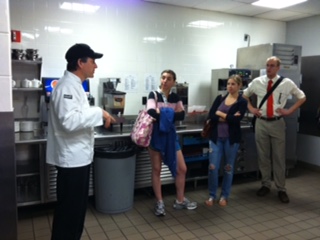I teach JOUR301 “Journalism and the Free World” through a news literacy perspective. This is typically the first journalism course students take, and the vast majority come in without ever having read a newspaper or watched the nightly news. They don’t know the difference between a blog, a press release and a news story. So we start from the very beginning: What Is A Journalist? and What Makes Something A Story?
I have taught this course six times, all online, both synchronously and asynchronously. The class is broken up into modules, each ending with an interview from someone related to the topic and a quiz on the section. There is a midterm and a final. Students are required to research the speakers and submit questions based on their reporting, as well as write up a short summary of what they learned from the interview.
Modules change from semester to semester. They have included: Journalism basics (vocabulary, interview and story sourcing), history, ethics, reporting on race, marginalized communities, reporting on trauma, investigative reporting and how the media covers college students. We often use historical events to discuss current news, i.e. Ida B. Wells’ coverage of lynching and the George Floyd stories, the Pentagon Papers and Wikileaks.
We spend a lot of time talking about media bias, the mistakes the media makes, and ways we have improved. Here is a 2021 slideshow for the Race and the Media module. As a class, we watch Alexandra Bell’s “Rewriting Racist Headlines” and then students are expected to come in the next class having analyzed recent headlines, photos and word choice, making suggestions on improvements. Students requested an additional module on LGBTQ and disabled communities, and I added that in for the Fall 2021 semester.
Interview assignment: This is not a writing class. (That is ENG307) But, in conjunction with the alumni affairs office, I set up all 70 students with a UD alumni. Students are expected to research their source, write a professional email asking for an interview, conduct a 15-20 minute interview and write up an analysis. They cannot do the interview by email or text. They must use Zoom or, at the very least, the phone.
This is terrifying for a majority of students who prefer to converse through screens. But they realize that being prepared makes a huge difference, and that interviews are very much like conversations. This is a skill they can use for job interviews, networking and other professional interactions. I have included an example below.
Guest speakers: One common comment from students is that they loved the guest speakers because “I thought all reporters were cold vultures, but they are actual people.” Past speakers included, Washington Post writer Paul Kane, NYT editor Carla Correa, WBAL news producer Katie Mazur, Fox 5 reporter Dana Arschin ( <- all UD alumni), Ted Anthony, Associated Press director of new storytelling, Lottie Joiner, former editor of the NAACP’s “The Crisis” magazine, Enjoli Francis, ABC News producer, Parade entertainment writer and former US Weekly deputy editor Mara Reinstein, Abigail Pesta, an investigative reporter who helped break the Larry Nassar case, and Wendy Ruderman, a Pulitzer Prize winning reporter who now works for The Marshall Plan.
Syllabus Interview assignment Student example: Interview Assignment Student example 2: Interview Assignment

